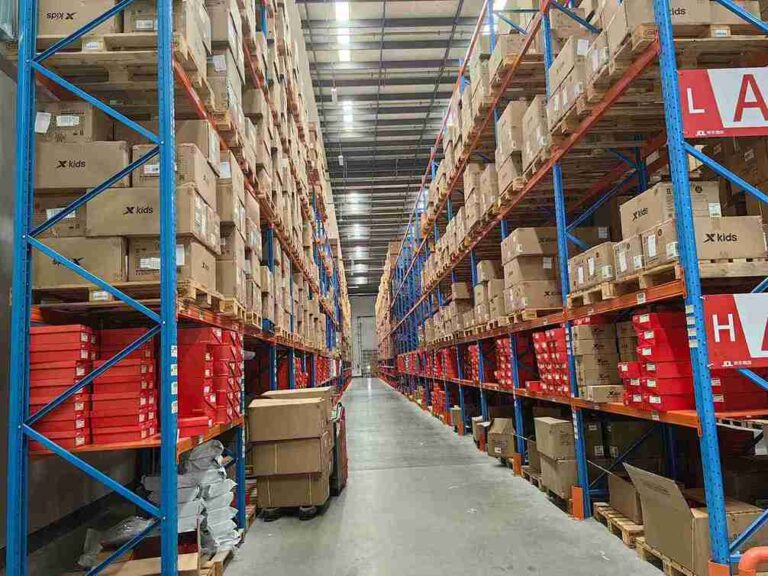📐 "First 50 Enterprise Queries Get Custom 3D Warehouse Design" Plan
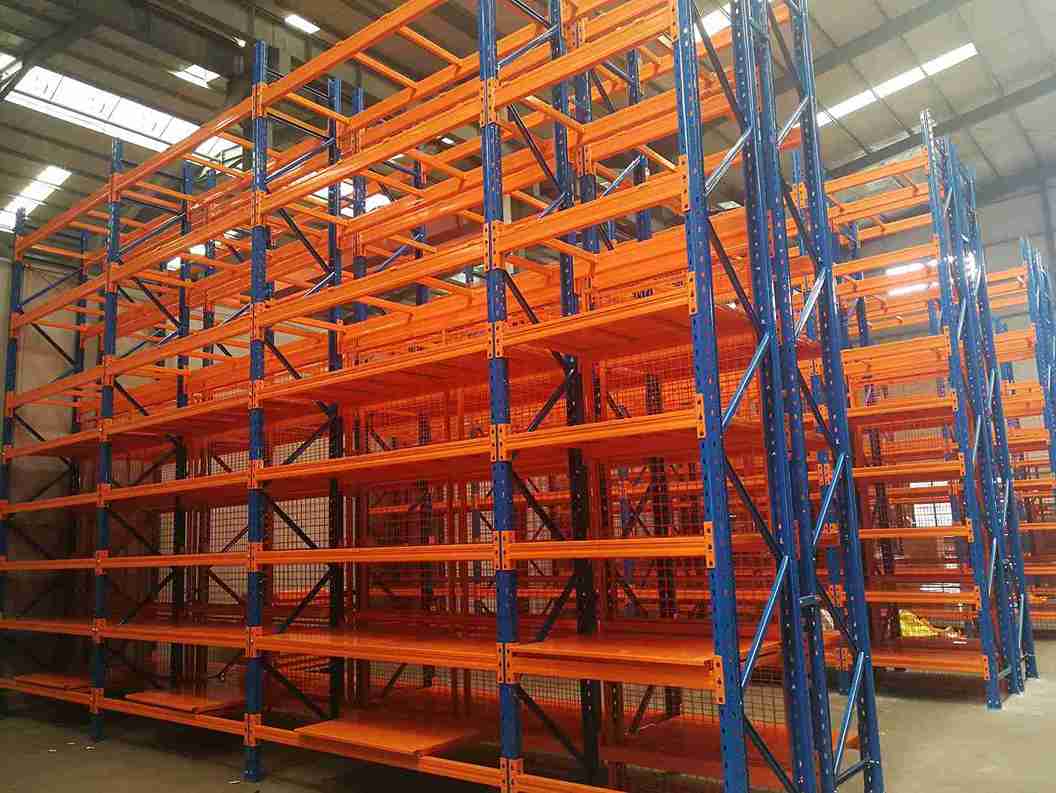
Beyond the Price Tag: The Strategic Guide to Selecting Top Industrial Racking System Suppliers for Durable & Cost-Effective Storage
In the complex ecosystem of modern logistics and warehousing, the storage infrastructure is the fundamental skeleton upon which operational efficiency, safety, and profitability are built. For businesses across Southeast Asia, the Middle East, Africa, and Latin America, the critical challenge lies not just in finding industrial racking system suppliers, but in identifying the right partners who deliver genuine, long-term value. The term “cost-effective storage” is often misconstrued as a synonym for the lowest initial price.
In reality, true cost-effectiveness is a multifaceted metric, deeply intertwined with the concepts of durability, operational uptime, safety compliance, and future scalability. This comprehensive guide delves into the strategic process of evaluating and selecting industrial racking system suppliers who can provide robust, durable industrial racking system solutions that stand the test of time and use. It aims to move beyond superficial comparisons and equip decision-makers with the knowledge to make an investment that pays dividends for decades, positioning their operations for growth in competitive global markets.
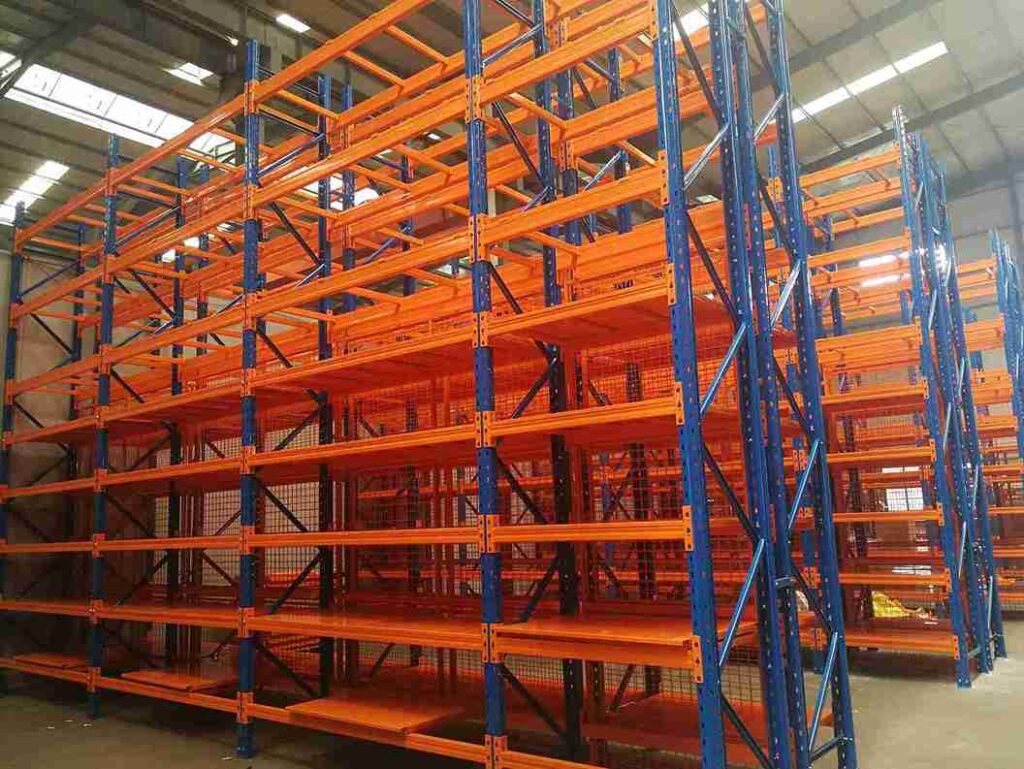
Redefining “Cost-Effective Storage” in Modern Logistics
The initial purchase price of a racking system is a single data point in a much larger financial equation. Forward-thinking logistics managers and warehouse operators understand that the true measure of cost-effective storage is calculated over the entire lifecycle of the asset. This holistic view separates tactical purchasing from strategic investment. The landscape of industrial racking system suppliers is diverse, ranging from basic fabricators to advanced engineering partners. Choosing a partner from the lower end of this spectrum based on price alone inevitably leads to a higher Total Cost of Ownership (TCO).
This manifests in frequent repairs, premature replacement, operational inefficiencies, and unacceptably high safety risks. Conversely, partnering with top-tier industrial racking system suppliers who prioritize engineering excellence and quality manufacturing results in a system that delivers reliable, safe, and efficient performance for 20, 30 years or more. The key is to identify industrial racking system suppliers whose definition of value aligns with this long-term perspective.
The Hidden Liabilities of a “Bargain” Racking System
The allure of a low upfront cost from certain industrial racking system suppliers can be strong, especially under budget constraints. However, this short-term gain is almost always offset by significant long-term pains that impact the entire operation.
Compromised Material Integrity and Fabrication: The core of any durable industrial racking system is the quality of steel and the precision of its fabrication. Less scrupulous industrial racking system suppliers may utilize lower-grade steel with inconsistent yield strength or substandard thickness. The fabrication process itself—the accuracy of punch-outs, the penetration and quality of welds—is paramount. Poorly fabricated components from such industrial racking system suppliers lead to difficult installations, misalignment, and the creation of inherent stress concentrators that drastically reduce the system’s load capacity and operational lifespan.
Inadequate Corrosion Protection: Warehouses are harsh environments. Humidity, temperature fluctuations, and exposure to chemicals relentlessly attack storage equipment. A high-quality powder-coat finish is a critical defense mechanism, not a cosmetic feature. Many industrial racking system suppliers offering bargain prices use inferior painting processes with minimal pre-treatment and thin coating layers. This results in finishes that chip easily and rust prematurely, compromising the structural steel beneath and leading to a cycle of repainting or early replacement.
The Cumulative Cost of Downtime and Repairs: Perhaps the most significant hidden cost of a subpar system is operational disruption. A racking system that requires constant attention—tightening connections, straightening beams, or replacing damaged components—consumes valuable maintenance labor and forces aisles out of service. The cost of lost productivity, combined with the ongoing expense of spare parts from often unreliable industrial racking system suppliers, can rapidly invalidate any initial savings.
The Lifecycle Value Proposition of Premium Industrial Racking System Suppliers
Investing in a high-caliber system from reputable industrial racking system suppliers transforms the cost narrative. The focus shifts from initial expenditure to long-term value creation and risk mitigation.
Decades of Uninterrupted Service: A properly engineered and manufactured industrial racking system is a capital asset designed for multi-decade service. This long lifespan defers the substantial financial outlay of a complete system replacement far into the future, providing a stable and predictable infrastructure.
Enhanced Operational Efficiency and Safety Culture: A robust racking system from leading industrial racking system suppliers instills confidence across the warehouse floor. It allows forklift operators to work more efficiently, minimizes the risk of product damage from rack failure, and, most critically, establishes a foundation for a strong safety culture. The financial and human cost of a single racking collapse is immeasurable, making the investment in safety from qualified industrial racking system suppliers non-negotiable.
Built-in Adaptability for Future Growth: Business needs evolve. The best industrial racking system suppliers design with modularity and future integration in mind. A quality system can often be reconfigured, expanded, or seamlessly integrated with automation technologies like AGVs and automated storage and retrieval systems (AS/RS), thereby protecting and extending the value of the initial investment.
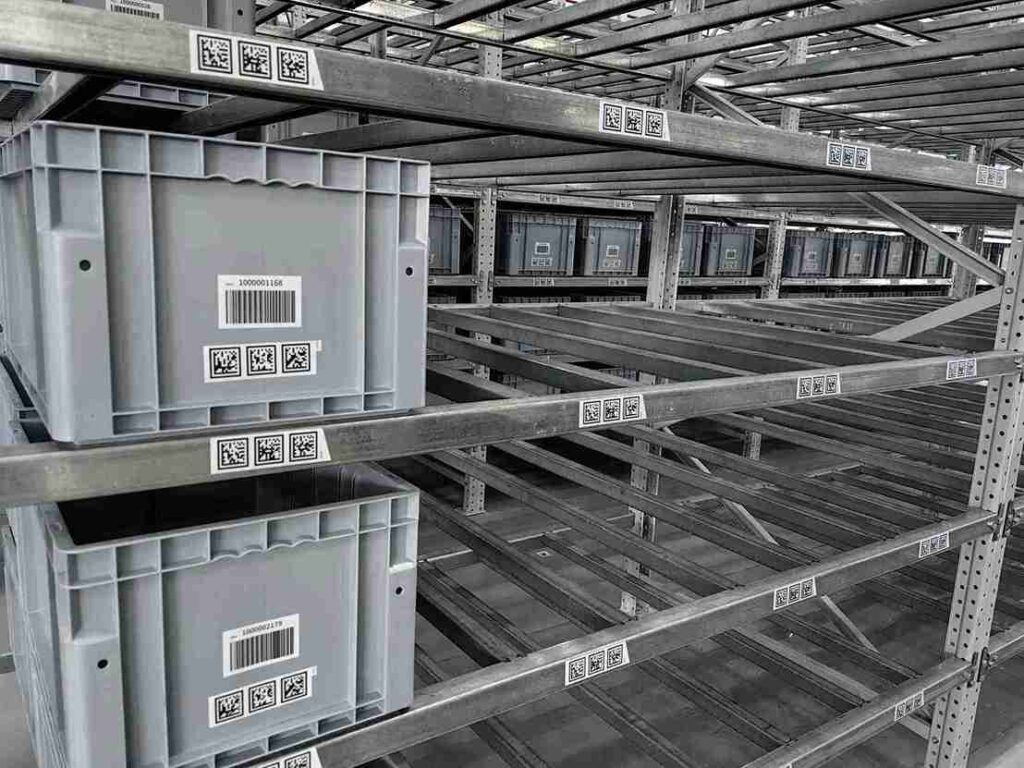
The Engineering Blueprint of a Truly Durable Industrial Racking System
Durability is not a single feature but the culmination of expert engineering, superior materials, and rigorous manufacturing standards. Discerning industrial racking system suppliers differentiate themselves through their unwavering commitment to these core principles.
1. The Foundation: Metallurgy and Structural Engineering
The selection of steel is the most fundamental decision. Premier industrial racking system suppliers specify high-tensile, cold-rolled steel with a certified and consistent minimum yield strength, typically starting at 345 MPa. This ensures the material can handle not just static loads, but the dynamic forces of forklift impacts and seismic events. The structural design of upright frames and beam profiles is optimized using advanced software like Finite Element Analysis (FEA) to identify and eliminate stress points, ensuring efficient and safe load distribution. This level of engineering is a hallmark of top industrial racking system suppliers.
2. The Heart of the System: Advanced Beam-to-Upright Connections
The connection between the beam and the upright is the most critical interface in a pallet racking system. It must possess immense strength while allowing for straightforward adjustability. Leading industrial racking system suppliers often employ patented or proprietary locking mechanisms, such as robust teardrop designs or bolted connections, engineered for a positive, secure, and reliable fit. In contrast, systems from less capable industrial racking system suppliers may feature poorly stamped or malleable connectors that are prone to deformation or dislodgement upon impact, creating a perpetual safety hazard.
3. The Guardian: Multi-Stage Surface Preparation and Finishing
A superior finish is a complex process, not a simple painting step. Reputable industrial racking system suppliers employ a multi-stage system to guarantee longevity:
Chemical Pre-treatment (Phosphating): This essential stage cleans the steel and creates a microscopic phosphate layer that dramatically enhances paint adhesion and provides a secondary barrier against corrosion.
Electrostatic Powder Coating: High-quality, epoxy-polyester hybrid powders are applied electrostatically to ensure a uniform coat on all surfaces, followed by thermal curing. The result is a thick, resilient, and consistent finish that is highly resistant to chipping, abrasion, and chemical exposure, far outperforming the wet paint used by many lower-cost industrial racking system suppliers.
4. Proactive Protection: The Role of Safety Accessories
A durable system is also a safe system. Integral safety components are a non-negotiable part of the offering from responsible industrial racking system suppliers:
Column Guards and Upright Protectors: These are essential sacrificial components, designed to absorb the energy of forklift impacts and protect the structural integrity of the uprights.
Wire Mesh Decking and Pallet Supports: These prevent pallets and products from falling through the beams and provide a secure surface for storage.
Seismic and Row-Spacing Braces: These are critical for overall structural stability, particularly in tall installations or regions with seismic activity, and their proper design is a key differentiator for expert industrial racking system suppliers.
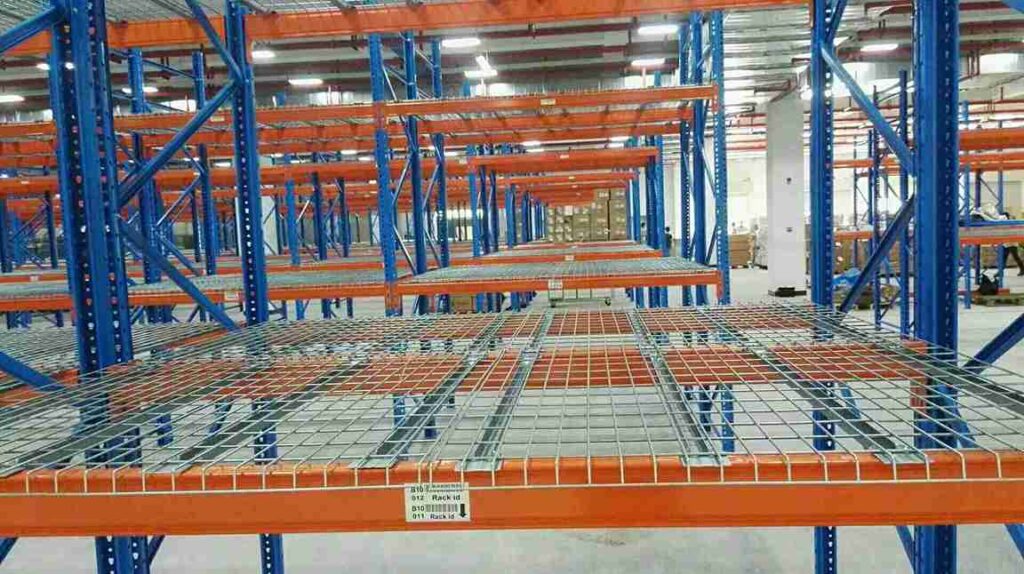
A Rigorous Framework for Vetting and Selecting Industrial Racking System Suppliers
The selection process for industrial racking system suppliers should be treated as a strategic partnership evaluation, not a simple procurement exercise.
1. Scrutinize Engineering and Certification Credentials
The most reliable industrial racking system suppliers are transparent about their engineering capabilities. They should have in-house or certified structural engineers who can provide detailed load capacity charts, seismic calculations, and full project documentation. Inquiries should be made about independent certifications against international standards like FEM 10.2.02 or RMI/ANSI MH16.1, which verify that the racking’s performance has been objectively tested.
2. Evaluate Manufacturing Prowess and Quality Control Protocols
The factory floor is where designs become reality. Prospective industrial racking system suppliers should be able to detail their manufacturing processes: Do they use automated, robotic welding for consistency? What specific tests do they perform on raw materials and finished components? A willingness to provide virtual or physical factory tours is a strong positive indicator of a quality-focused operation.
3. Analyze Project Portfolios and Industry-Specific Experience
Examine the track record of the industrial racking system suppliers under consideration. Do they have proven experience in projects of a similar scale, industry, and complexity to yours? A supplier who has successfully executed large-scale automated storage and retrieval systems (AS/RS) will possess the necessary engineering rigor for demanding applications, setting them apart from general-purpose industrial racking system suppliers.
4. Assess the Comprehensive Service and Support Ecosystem
The relationship with top-tier industrial racking system suppliers extends far beyond the delivery of goods. What is their process for installation supervision and verification? Do they offer ongoing professional rack inspection and maintenance programs? What is their lead time and process for supplying spare parts years after the initial installation? A partner that offers a full lifecycle support package demonstrates a long-term commitment to your operation’s success and safety.
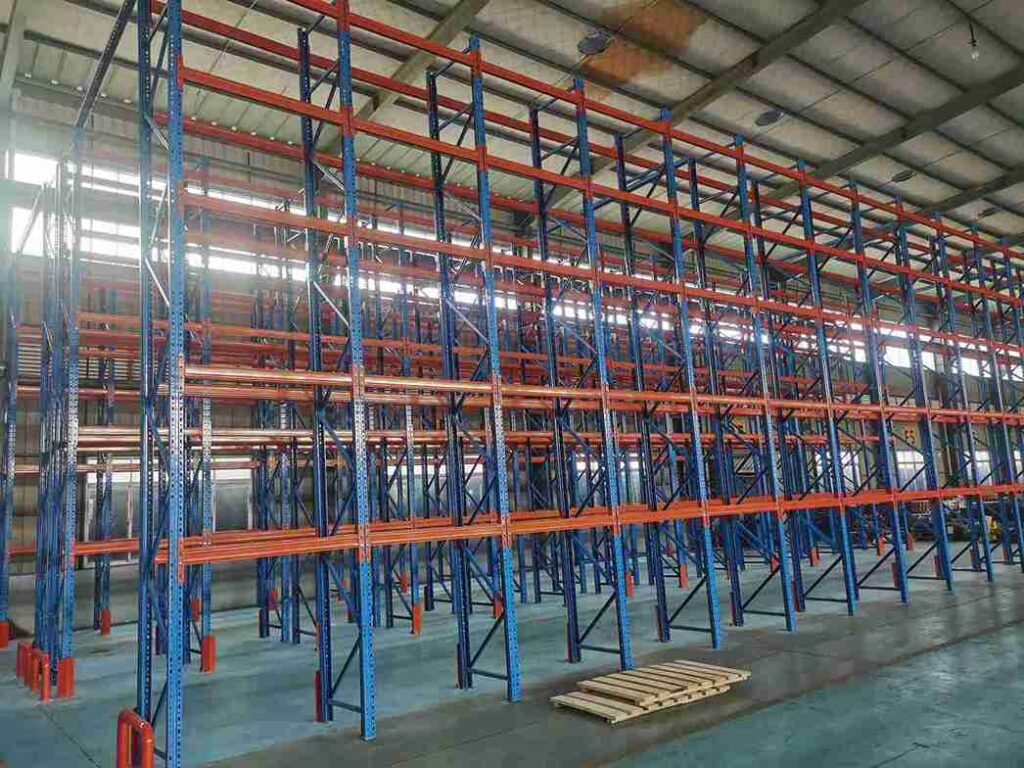
Future-Proofing with Automation: The Critical Role of Precision Racking
In an era defined by the rapid adoption of warehouse automation, the selection of industrial racking system suppliers takes on a new dimension of importance. The most cost-effective storage solution today is one that can seamlessly integrate with the automated technologies of tomorrow.
Precision Engineering for Robotic Integration
Racking systems designed for manual forklift operations have different tolerances than those built for Automated Guided Vehicles (AGVs) or robotic pallet shuttles. When working with automation, the structural tolerances for plumb, level, and beam height consistency are exceptionally tight. A variance of just a few millimeters can cause a robotic system to fault or fail. Therefore, industrial racking system suppliers serving the automation market must possess superior manufacturing capabilities and rigorous installation protocols to meet these precision demands, a capability that is not universal among all industrial racking system suppliers.
The Racking Supplier as an Integration Partner
In an automated warehouse, the racking is more than just storage; it is the fixed infrastructure upon which the entire automated system operates. The cranes, shuttles, and conveyors are dependent on its absolute precision and stability. Consequently, the chosen industrial racking system suppliers must be capable of acting as a true integration partner, collaborating closely with automation providers. Their engineering teams must work in concert to ensure the racking design perfectly aligns with the operational envelope and dynamic load requirements of the automation equipment. This collaborative, precision-focused approach is what separates the leading industrial racking system suppliers in the age of Industry 4.0.
Global Considerations: Selecting Industrial Racking System Suppliers for Emerging Markets
For businesses operating in Southeast Asia, the Middle East, Africa, and Latin America, the selection of industrial racking system suppliers involves additional, critical layers of consideration. The logistical challenges, climatic conditions, and regulatory environments in these regions demand a supplier with specific expertise and a robust operational framework.
Navigating Supply Chain Logistics and Local Support
The best global industrial racking system suppliers have established reliable supply chains and, ideally, local representation or partnerships in key growth markets. This local presence is crucial for managing shipping logistics, navigating import regulations, and providing timely on-the-ground support for installation, inspection, and maintenance. Companies should prioritize industrial racking system suppliers who can demonstrate a proven and efficient track record of delivering and supporting projects in their specific region.
Engineering for Environmental Challenges
Warehouses in tropical climates face high humidity and salt-laden air, while facilities in arid regions contend with dust and extreme temperature swings. Expert industrial racking system suppliers will offer finishing systems and material recommendations tailored to these conditions. This might include specifying a more robust powder-coat formulation or, in extreme cases, discussing the benefits of hot-dip galvanization for certain components. This level of environmental consideration is a key marker of experienced industrial racking system suppliers.
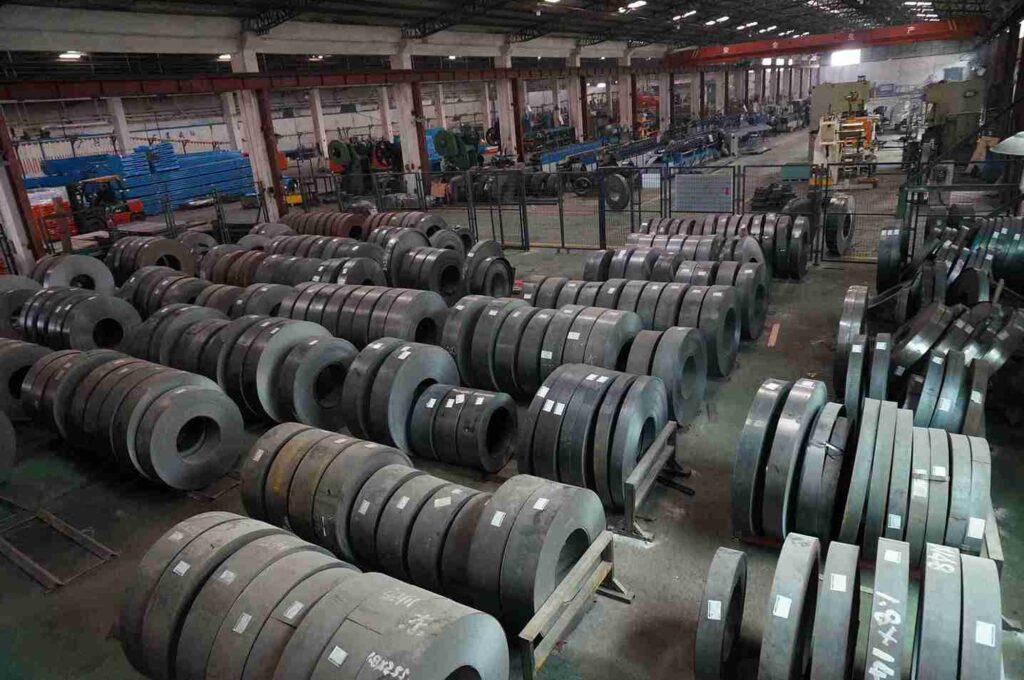
Conclusion: Forging a Strategic Partnership for Long-Term Success
The process of selecting from the vast field of global industrial racking system suppliers is a strategic imperative with profound implications for a company’s logistical efficiency, safety record, and bottom line. By moving beyond a narrow focus on initial price and adopting a holistic, lifecycle-oriented evaluation framework, businesses can make an informed, value-driven decision. The goal is to identify industrial racking system suppliers who are not merely equipment vendors, but true engineering and operational partners. These partners provide the durable, safe, and adaptable physical backbone that enables supply chains to thrive in a competitive and dynamic global marketplace. The right partnership with qualified industrial racking system suppliers is an investment in resilience, efficiency, and sustainable growth.
Frequently Asked Questions (FAQs)
1. What specific certifications should we prioritize when shortlisting industrial racking system suppliers?
Beyond corporate quality standards like ISO 9001, the most important certifications are those that directly validate the product’s structural integrity and safety. Look for industrial racking system suppliers whose products are independently tested and certified to recognized industry standards such as the European FEM 10.2.02 or the American RMI/ANSI MH16.1. These certifications provide verifiable proof that the racking components meet published load capacity and safety performance criteria.
2. How critical is a seismic rating for our warehouse, and how does it impact the system design from industrial racking system suppliers?
Seismic design is a critical aspect of risk management, even in zones classified as low-to-moderate risk. A seismic-rated design from knowledgeable industrial racking system suppliers involves specific bracing configurations, reinforced connections, and potentially higher-grade materials to withstand lateral forces. It significantly enhances the overall stability of the installation. While it increases the initial material and engineering cost, it is a vital investment in asset and personnel protection. Reputable industrial racking system suppliers will perform a site-specific risk analysis to determine the appropriate level of seismic design.
3. Is it safe to integrate new racking from one supplier with our existing, older system from a different vendor?
This practice is strongly discouraged and is considered a significant safety risk by all reputable industrial racking system suppliers. Different suppliers employ unique engineering designs, steel specifications, and connection details. Mixing components creates unpredictable load paths and can severely compromise the structural integrity of the entire installation. The safe approach, as recommended by all qualified industrial racking system suppliers and professional engineers, is to keep systems completely separate or to plan for a phased replacement of the older system.
4. What are the key factors that influence the lead time for a large-scale project from industrial racking system suppliers?
For a major project involving several thousand pallet positions, a typical lead time can range from 10 to 20 weeks. Factors influencing this timeline include the project’s engineering complexity (e.g., for high-bay or AS/RS applications), the current raw material (steel) market availability, the manufacturing capacity of the industrial racking system suppliers, and the logistics involved in shipping to the final destination. Early engagement with prospective industrial racking system suppliers is crucial for accurate timeline planning.
5. For warehouses exceeding 15 meters in height, what specialized expertise should we expect from industrial racking system suppliers?
Very Narrow Aisle (VNA) and high-bay warehouses demand a superior level of engineering and project management from industrial racking system suppliers. Key considerations include the use of custom-designed, heavy-duty upright frames, specialized deep-truss beams to control deflection, an extreme focus on installation precision, and seamless integration with high-reach storage and retrieval machines. The requirements for foundation flatness and frame plumbness are exponentially stricter. Only the most experienced and technically proficient industrial racking system suppliers possess the capability to successfully execute these complex, high-density storage projects.
If you need warehouse racking CAD drawings, we can do warehouse racking planning and design for free, you can consult us. Our email: jili@geelyracks.com.

